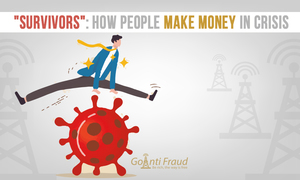Humanity has repeatedly faced epidemics that have had serious consequences, both economic and social and political. Now that we ourselves are confronted with the COVID-19 pandemic, it is interesting to look into the past and find out how the epidemics have affected the world at different periods of history.
Plague of Antoninus, third century AD
Smallpox epidemic that broke out in Rome, India, China. The consequences of the spread of this disease were the collapse of the Roman Empire and Han Empire. The cost of physical labour has increased dramatically and slavery was no longer effective. Panic caused by the epidemic weakened faith in the old gods, so Christianity and Buddhism spread as "religions of salvation". Christians were not afraid to die, they did merciful deeds, built hospitals. There were also profound changes in morality.
Plague of Justinian, VI century
The bubonic plague pandemic, which was a manifestation of the Byzantine Empire crisis. Before that, the war between Byzantium and Persia lasted for many years, both empires suffered from hunger. The plague epidemic has also affected both States. The Byzantine emperor's plan to revive Rome failed then. There was a demographic and political crisis. As a result, the vacuum created by these crises was filled by Islam. This is how the Arab state appeared, and Islam became the world religion.
"Black Death", XIV century
The next bubonic plague pandemic that affected China and the West. After the revival of the Silk Road, trade intensified, involving long-distance travel, and plague foci have scattered across the Eurasian Steppes. That's how the infection spread to China and Europe. The consequences were very severe, and they were amplified by the emergence of many cities, unsanitary and wars in Europe.
Smallpox, XVI century
After the discovery of the New World, smallpox and other diseases were brought from Europe to America, where the local population was not immune to these diseases. As a result, 95% of the indigenous peoples of Peru and Mexico have extinct, and the Aztecs and Incas died. The same thing happened in Oceania and Australia after a while, when Europeans came into contact with aborigines and infected them with diseases that were new to the local population. The smallpox epidemic was one of the factors that allowed Europeans to quickly conquer the American continent. America's wealth began to flow into Europe, contributing to capitalism and global trade.

Smallpox, XVIII century
After the plague, smallpox became the new grief of Europe, with large cities becoming their foci. The epidemic had an impact on both daily life and politics. Monarchs died, soldiers died, Indians died in North America. Subsequently, Europeans settled in the Northeast, Canada and the Wild West. Smallpox in America became one of the factors in the emergence of the United States of America.
In Europe, quarantines were introduced to combat the disease, but they were not effective, since the government encouraged the development of trade. That's how the vaccination came about.
Cholera, XIX century.
Cholera foci appeared in India, where, in a humid tropical climate, cholera was a common seasonal infection. But the arrival of Europeans in India changed everything: the British colonial policy forced the Indians to abandon the nomadic lifestyle, which used to help them avoid dangerous cholera pockets. The epidemic has caused a series of socio-economic crises.
The authorities in Europe and North America have found an effective way to combat the disease. Instead of quarantine (as the commercial and industrial sectors of the population were very dissatisfied with the interruption of work) they began to use social hygiene. This is how sanitary inspections, sanitary doctors appeared, and the practice of personal hygiene spread. They began to take measures to protect the health of the population.
Spanish influenza, 1918-1921
As a result of previous epidemics, developed countries formed national health systems already before the early 20th century. Vaccines were created, sanitary controls were tightened, and personal hygiene finally became the norm. Many diseases have been eradicated, including plague, smallpox, typhus.
In 1914, as a result of the First World War, the world crisis began. There where warfare was taking place, outbreaks of dangerous diseases started again. But doctors coped with them using earlier invented methods. However, it was not so easy to deal with the Spanish flu, which was transmitted by air.
The Spanish influenza has spread to all continents due to global transport links. After the end of the war, people returned home in huge numbers. As a result, the losses were enormous, both in terms of human lives and in the economic aspect. Moreover, not only the colonial countries suffered, but also the developed parts of the world.
COVID-19, 2020
The COVID-19 epidemic has spread throughout the world and came as a surprise to humanity. Thanks to social hygiene and quarantine measures, it has been possible to contain the pandemic and minimize the loss of human lives. However, we have suffered great losses in economic terms: for the first time in history, governments were forced to restrain production and trade due to quarantine measures. And even when the quarantine has been eased, the situation remains depressing, and the forecasts for a further economic crisis are not comforting.
Nevertheless, humanity now has the advantage of developing information technology. Thanks to total digitization, many businesses were able to "survive" by putting their business processes online. Thanks to the remote format of work, many people are not left without a livelihood. Thus, the consequences of the pandemic are not as terrible as they could have been in the past.
Do you want to protect yourself and your loved ones from all crises and epidemics? Start your own remote business that makes a profit even during quarantine.Leave your application for a free consultation.
































